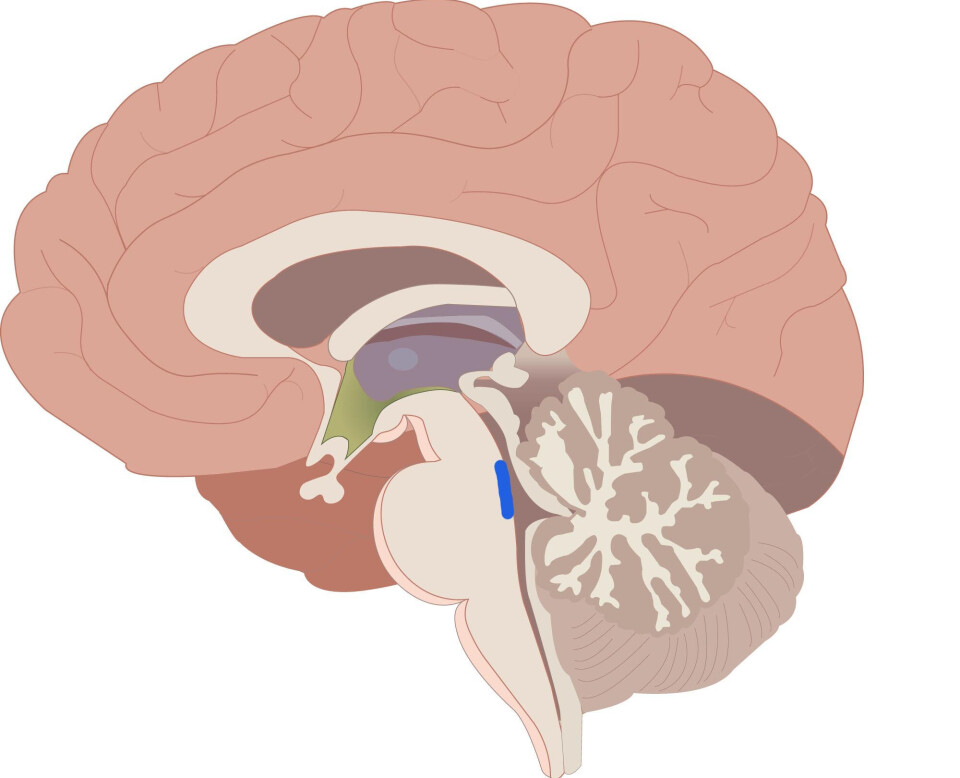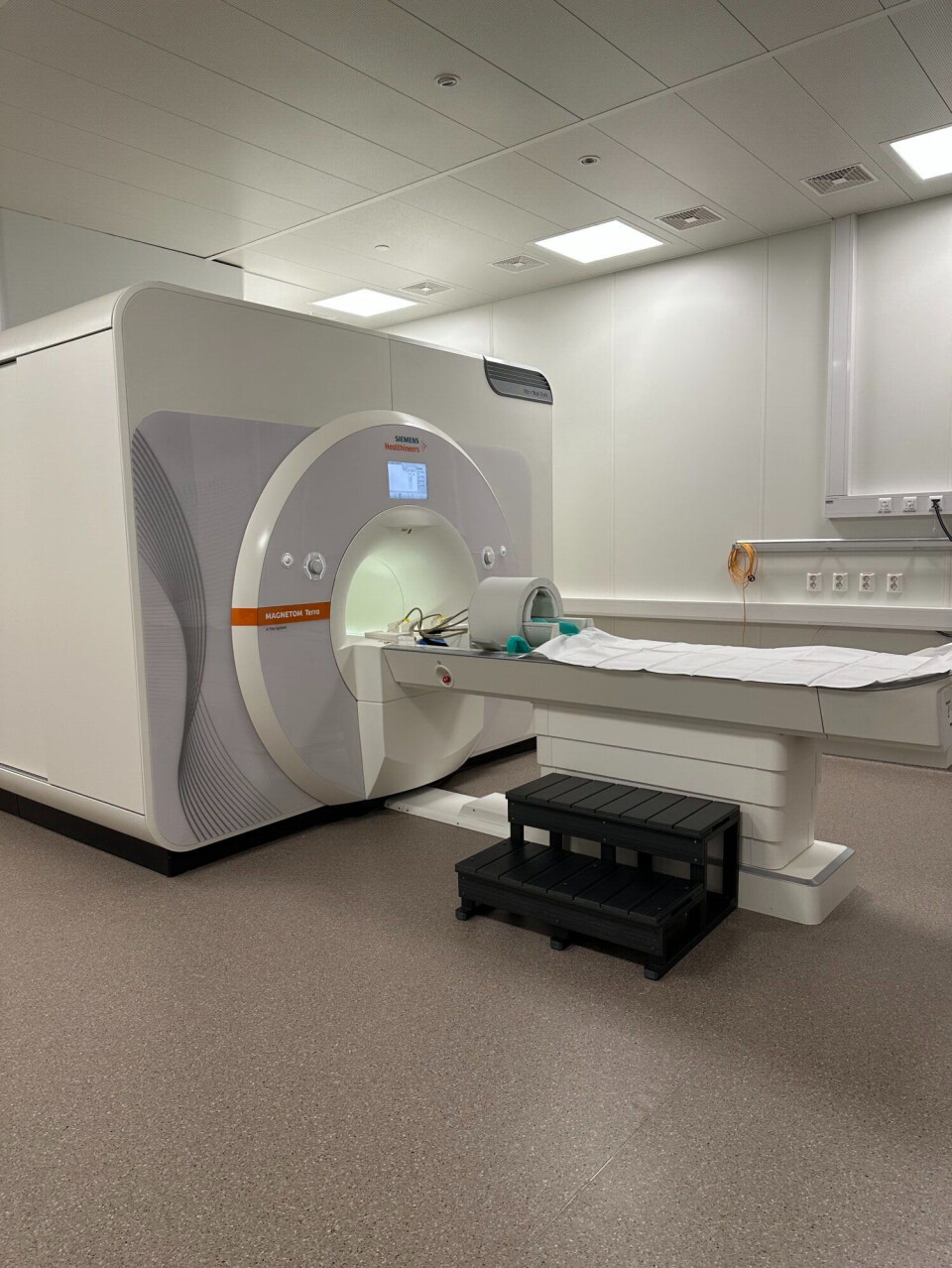THIS CONTENT IS BROUGHT TO YOU BY NTNU Norwegian University of Science and Technology - read more
Did you know that a blue-coloured organ in your brain can help you as you get older?
It plays a central role in how we interpret our surroundings.

Do you tend to perceive people you meet as happy and positive? Or are you vigilant and look for signs of dissatisfaction and anger in their facial expressions?
That may be related to how old you are. A new study from NTNU shows that older people are more likely than younger people to interpret ambiguous facial expressions as positive.
“We know little about how the brain interprets signals that are ambiguous. At the same time, we know that uncertainty affects people’s mental well-being. Being able to interpret ambiguous signals we receive from our surroundings is crucial for our well-being,” says researcher Maryam Ziaei at NTNU’s Kavli Institute for Systems Neuroscience.
Fight or flight centre
Zianei studies how a small organ at the bottom of our brain, called the locus coeruleus, works when we try to understand other people’s emotions.
The name locus coeruleus is Latin and can be translated as 'the blue spot' or 'the blue area.'
This small organ plays an important role when we focus on solving tasks. It helps to capture our attention when we are inattentive.
For example, when we walk down the street lost in thought and a car suddenly comes up behind us.
The blue spot is no more than one and a half centimetres tall and only a few millimetres wide. Yet it plays an important role in our response to stress and panic as it produces norepinephrine, the body’s 'fight-or-flight' hormone.
“This structure regulates how alert and attentive we are. At very low activity, we'll be sleepy and lethargic, while increased activity makes us awake and focused. But we can also get too much activity in the locus coeruleus, then we become distracted and experience stress,” says Ziaei.

Adapts to cognitive decline
Perceiving the emotional signals another person sends out can be challenging when those signals are conflicting. If you're talking to a person who is both smiling and looking angry at the same time, you have to be alert and pay attention to understand whether the person is friendly or not.
This means that the small blue-coloured organ in the brain has to function optimally.
At the same time, our cognitive skills tend to deteriorate with age. It now seems that the locus coeruleus is able to adapt and compensate for this weakening.
To learn more about this, researchers at the Kavli Institute had people of different ages look at pictures of faces showing different expressions while measuring their brain activity.
75 people aged 21 to 30, and 69 people aged 67 to 75 took part in the study, with an equal number of men and women in each age group.
The pictures they were asked to interpret showed faces ranging from clearly happy, through more or less ambiguous, to clearly angry.
“We saw that the participants took longer to interpret the ambiguous expressions, while the older participants interpreted these as happy to a greater extent,” says Ziaei.

More active among the elderly
“It may be that the younger we are, the more we tend to interpret these ambiguous signals negatively, as if they pose a threat. In people with good mental health, this will change with age,” says Ziaei.
The researchers measured brain activity and took pictures of the brain while the participants assessed the images.
They found that the oldest participants showed greater activity in the locus coeruleus than the younger ones when the images were completely ambiguous.
The researchers also saw that the oldest participants had greater activity in the connection between the locus coeruleus and the frontal lobe, more specifically the dorsolateral prefrontal cortex.
This part of the frontal lobe is particularly related to cognitive control, memory, and attention.
The spot has connections
Prior to the study, participants underwent a thorough assessment through questionnaires.
They were asked a number of questions related to mental health, such as the presence of anxiety or depression, emotional regulation, and empathy.
This allowed the researchers to create a profile of each participant’s state of mental well-being.
The researchers found a link between how well a person felt and how active the connection was between the blue spot and the area in the frontal lobe.
"We found that the older participants who had increased activity in the connection between the locus coeruleus and the dorsolateral prefrontal cortex also had better well-being,” says Ziaei.

Protects against cognitive impairment
The researchers believe this shows that the locus coeruleus adapts as we age, compensating for reduced cognitive abilities.
The function of the dorsolateral prefrontal cortex, or weaknesses in its functioning, is also associated with diseases such as Parkinson’s and Alzheimer’s. This makes the findings extra interesting, according to the researchers.
Identifying this signalling pathway can bring researchers one step closer to targeted treatment of emotional difficulties in depression in old age, or in neurodegenerative diseases.
The fact that the locus coeruleus responds more actively to sensory impressions that arouse attention has a protective effect against cognitive impairment as we grow older.
For example, when you suddenly hear the sound of a car behind you, even though you were lost in thought – a phenomenon that has been shown by other research.
“If we can make changes here, either with stimulation, medication, or exercise, we may be able to affect the function of this part of the brain. Not only in people with illness, but for people as a whole. What we want to understand here is the connection between our ability to process social information, and how it is related to feeling good mentally,” says Ziaei.
The researchers worked in close collaboration with Heidi Jacob from Harvard Medical School, Boston, USA.
Reference:
Dave et al. Age-related Increase in Locus Coeruleus Activity and Connectivity with Prefrontal Cortex During Ambiguity Processing, The Journal of Neuroscience, 2025. DOI: 10.1523/JNEUROSCI.2059-24.2025
More content from NTNU:
-
Can we tap the ocean’s power to capture carbon?
-
Researchers have uncovered major problems in Norway's salmon industry
-
Why ChatGPT is bad at imitating people
-
Outer space has a trash problem, according to researchers
-
These researchers want quantum computers that work properly
-
If you can hear your neighbour snoring, there’s something wrong with the building you live in





































